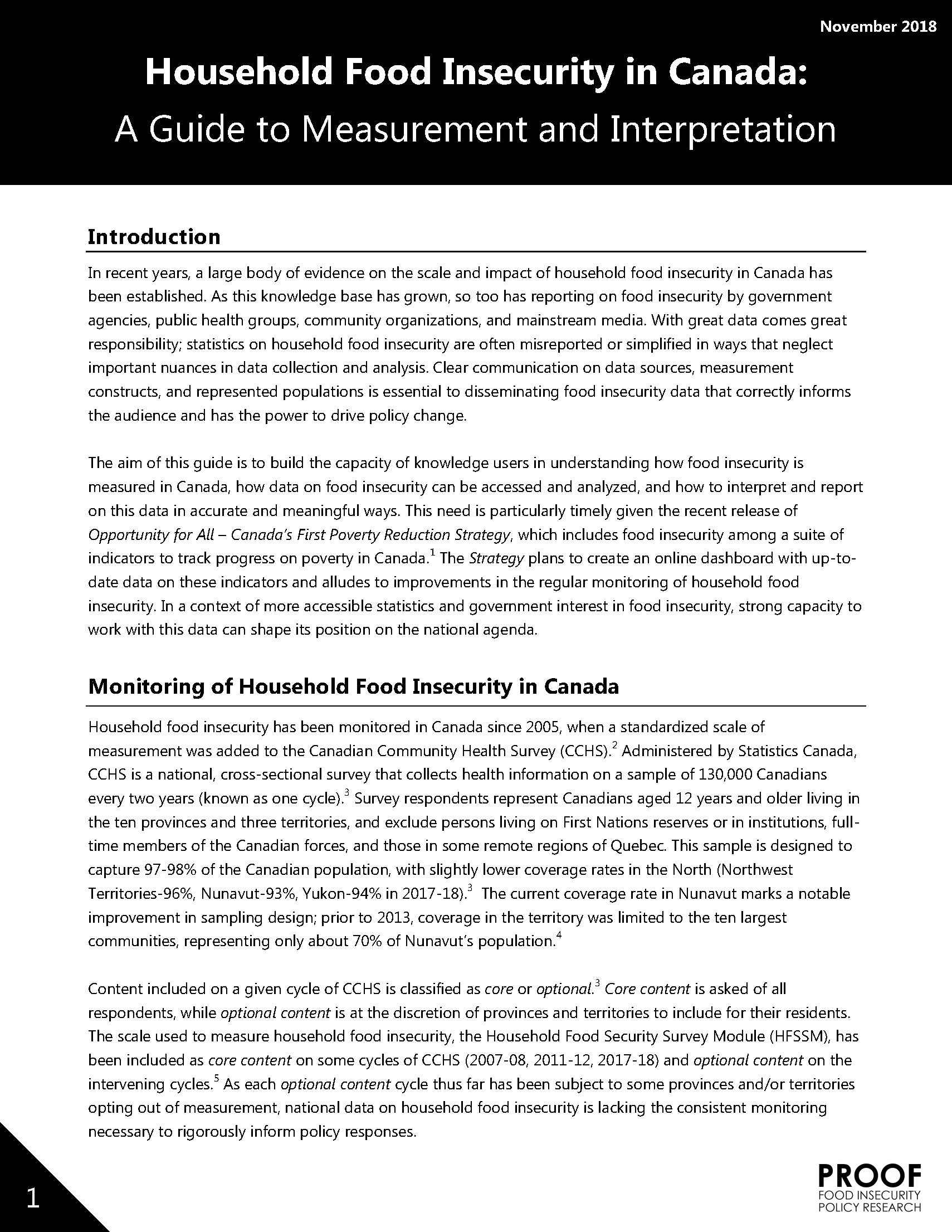Household Food Insecurity in Canada: A Guide to Measurement and Interpretation
November 28, 2018
We will be updating our measurement guide to reflect the measurement of food insecurity through Statistics Canada’s Canadian Income Survey. In the meantime, we strongly encourage visitors to also read the reports for the latest statistics on household food insecurity in Canada, the differences in reporting from previous surveys and reports, and other important considerations when interpreting the statistics.
Update 2022-07-12: A previous version of this guide included an additional question asking “Which of the following statements best describes the food eaten in your household in the past 12 months, that is since [current month] of last year?” at the start of the module that was not part of determining household food insecurity status. Statistics Canada surveys no longer ask this question. It has been removed from the Appendix of this guide for clarity and consistency.
Food insecurity data must be clearly communicated in order to correctly inform audiences and drive policy change. The guide will help you understand how food insecurity is measured in Canada and how to interpret the data.
In recent years, a large body of evidence on the scale and impact of household food insecurity in Canada has been established. As this knowledge base has grown, so too has reporting on food insecurity by government agencies, public health groups, community organizations, and mainstream media.
With great data comes great responsibility; statistics on household food insecurity are often misreported or simplified in ways that neglect important nuances in data collection and analysis. Clear communication on data sources, measurement constructs, and represented populations is essential to disseminating food insecurity data that correctly informs the audience and has the power to drive policy change.
The aim of this guide is to build the capacity of knowledge users in understanding how food insecurity is measured in Canada, how data on food insecurity can be accessed and analyzed, and how to interpret and report on this data in accurate and meaningful ways.

